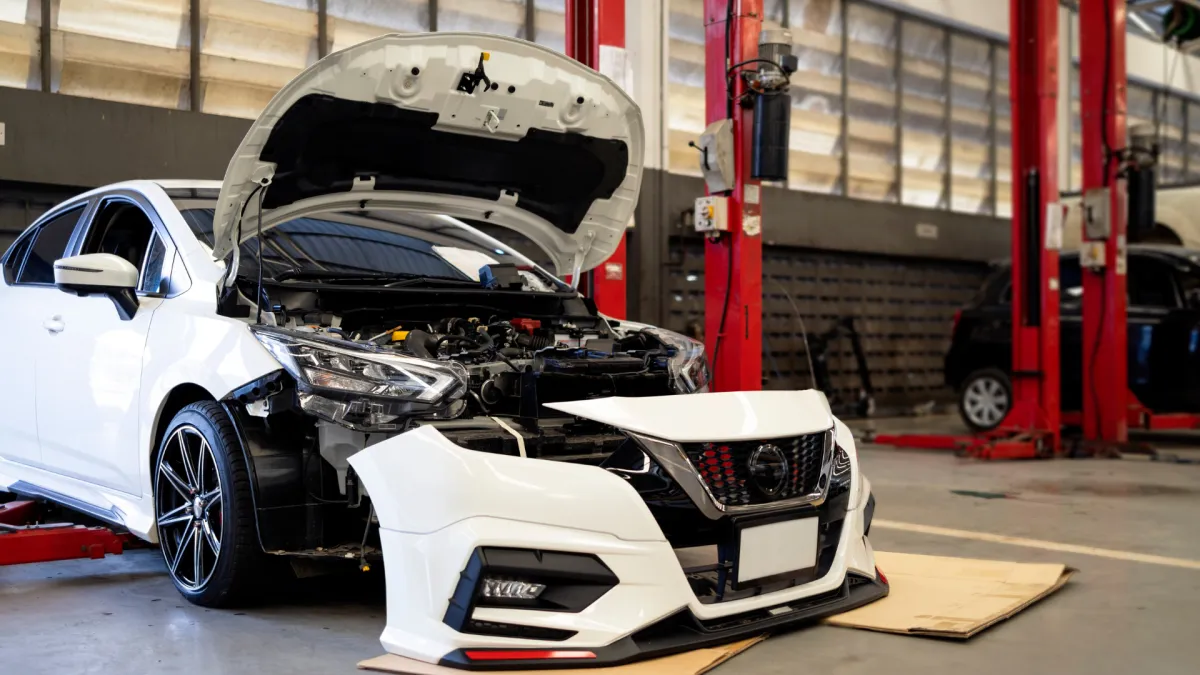BLOGS

Keeping Your Japanese Car in Top Shape: A Maintenance Checklist
Keeping Your Japanese Car in Top Shape: A Maintenance Checklist
Japanese cars are known for their reliability, efficiency, and long-lasting performance. However, to keep your vehicle running smoothly for years to come, proper maintenance is essential. Whether you own a Honda, Toyota, Nissan, Subaru, or any other Japanese brand, following a regular maintenance routine will ensure longevity and optimal performance. Here’s a complete checklist to help you maintain your Japanese car.
1. Regular Oil Changes
Engine oil is the lifeblood of your vehicle, keeping all moving parts lubricated and reducing friction. Follow the manufacturer’s recommendation for oil change intervals, typically every 3,000 to 7,500 miles depending on the oil type (conventional or synthetic).
Pro Tip:
Always use the recommended oil grade specified in your owner's manual.
Check the oil level regularly and top up if necessary.
2. Monitor Fluid Levels
Apart from engine oil, several other fluids need to be checked and replaced periodically:
Coolant/Antifreeze – Prevents overheating and corrosion.
Transmission Fluid – Ensures smooth gear shifts.
Brake Fluid – Maintains braking efficiency.
Power Steering Fluid – Helps in smooth steering response.
Windshield Washer Fluid – Keeps visibility clear in different weather conditions.
3. Inspect and Replace Air Filters
A clean air filter improves engine performance and fuel efficiency. Change the engine air filter every 12,000 to 15,000 miles and the cabin air filter every 15,000 to 30,000 miles.
Why It’s Important:
A dirty engine air filter can reduce fuel efficiency, hinder acceleration, and increase emissions.
The cabin air filter ensures clean air circulation inside the car, preventing allergens and pollutants from entering the cabin.
4. Tire Maintenance
Tires impact your car’s safety, fuel efficiency, and ride comfort. To keep them in top shape:
Check tire pressure monthly and maintain it as per the manufacturer's recommendation.
Rotate tires every 5,000 to 8,000 miles for even wear.
Inspect tread depth and replace tires when they are worn out.
Get wheel alignment checked if you notice uneven tire wear or steering issues.
5. Battery Health
A weak or failing battery can leave you stranded. Check your battery’s condition every 6 months, ensuring terminals are clean and free of corrosion. Most car batteries last 3 to 5 years, so consider replacement accordingly.
6. Brake System Inspection
Brakes are crucial for safety. Inspect brake pads, rotors, and fluid regularly. If you hear squeaking or grinding noises or experience reduced braking performance, get them checked immediately.
7. Timing Belt and Drive Belts
Japanese cars are known for their durable timing belts, but they still need replacement as per manufacturer guidelines (usually 60,000 to 100,000 miles). Drive belts should also be inspected for cracks and wear.
8. Spark Plugs and Ignition System
Spark plugs play a key role in fuel combustion. Replace them every 30,000 to 100,000 miles, depending on the type (copper, platinum, or iridium). A well-maintained ignition system ensures optimal fuel economy and engine efficiency.
9. Exhaust System Check
A leaking or damaged exhaust system affects fuel efficiency and emissions. Inspect for rust, leaks, or unusual noises from the exhaust.
10. Keep It Clean
Washing your car regularly prevents dirt buildup, rust, and paint damage. Waxing every few months adds a protective layer against environmental elements. Interior cleaning is also essential to maintain a fresh and comfortable driving experience.
Final Thoughts
Keeping up with regular maintenance ensures your Japanese car stays in peak condition for years. Follow this checklist and always refer to your owner’s manual for specific service intervals. A well-maintained car not only runs better but also retains its value over time, Need professional Mechanic ? Visit us on Automed Car Care Calvar City.
By taking proactive steps, you’ll enjoy the legendary reliability and performance that Japanese cars are known for!





